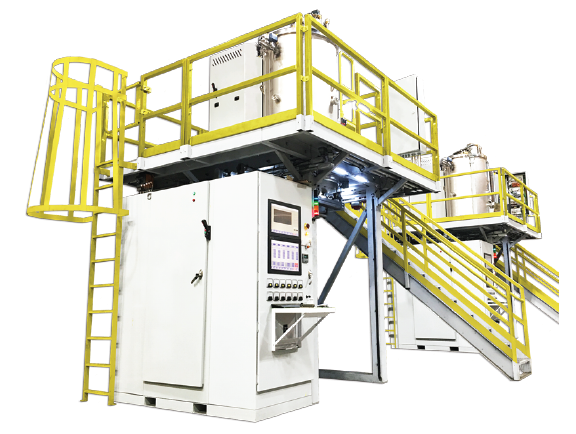
CVD and CVI Systems
Process Overview
CVD (Chemical Vapor Deposition) and CVI (Chemical Vapor Infiltration) systems enable deposition and infiltration of a wide range of materials using various precursor reactions. Materials commonly processed include silicon carbide (SiC), silicon (Si), silicon nitride (Si₃N₄), boron nitride (BN), silicon boron nitride (SiBN), boron carbide (B₄C), pyrolytic carbon (C), zinc sulfide (ZnS), and zinc selenide (ZnSe).
These systems feature precise recipe-controlled delivery of gaseous, liquid, or vaporized solid precursors, along with carrier and guard gases. Advanced gas and vapor delivery setups utilize mass flow controllers and proportional vacuum control valves to manage flow rates and partial pressures. Integrated safety protocols support the safe handling of toxic and reactive precursors such as methyltrichlorosilane (MTS), silane (SiH₄), dichlorosilane (DCS), trichlorosilane (TCS), silicon tetrachloride (SiCl₄), methane (CH₄), ammonia (NH₃), boron trichloride (BCl₃), and hydrogen selenide (H₂Se), among others.
Applications
- Coating of Semiconductor Substrates
- Composite Manufacturing with Ceramic Matrix Composites (CMC)
- Deposition of Hard Protective Coatings (e.g., SiC, BN)
- Optical Coating for Infrared and Visible Spectrum Components
- Production of Pyrolytic Graphite and Carbon Layers
- Fabrication of Advanced Ceramics and High-Temperature Materials
- Infiltration of Porous Structures for Aerospace and Defense
- Corrosion and Oxidation Resistant Coating for Industrial Components
- Surface Functionalization in Electronic and Photonic Devices
- R&D in Materials Science for Novel Coating Technologies